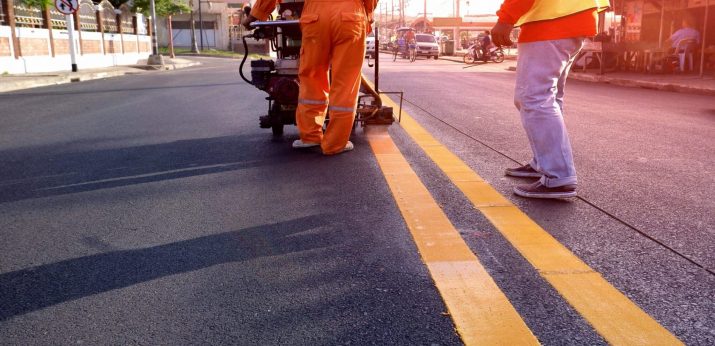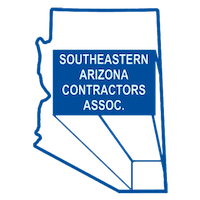According to data from the National Highway Traffic Safety Administration, about 40,000 road crash fatalities occur each year on US highways. A scrutiny of the documented causes further reveals that many of these crashes result from circumstances that are directly or indirectly related to road markings.
Take lane departures, for instance. It turns out that they were responsible for 53% of all US traffic fatalities from 2014 to 2016, and 51% over the subsequent two years.
To curb the crisis, federal and state department departments have been rolling out innovative engineering countermeasures that prioritize, among other things, all types of road markings.
One of the most recent ones is the implementation of the final rule published in the Manual on Uniform Traffic Control Devices (MUTCD). It was effected in September 2022 to regulate retroreflectivity standards in the design and maintenance of road markings.
This guide explains the relevance of such measures, how they came to be, plus the role of road markings in reducing traffic crashes and fatalities.
Importance of Road Markings
Road markings can be traced as far back as 1300 AD, when they were used in Rome to regulate the flow of foot traffic. It was not until the 20th Century that they were finally recognized officially in the US as a road safety measure.
And over the years, they’ve indeed managed to live up to that by helping out road users in the following ways.
#1. Positioning
Road markings are built around the concept of “self-explaining roads”, which seeks to streamline navigation through intuitive optimizations. They now come in sorts of shapes, colors, and layouts, with each communicating a specific universal message to motorists, cyclists, and pedestrians.
The message itself is a visual guideline that tells you how what you can and can’t do on the road. Your subconscious mind is capable of processing several of these indicators at once, after which it uses the information to delineate the traffic path.
This is how you get to align yourself with the traffic flow and maintain proper positioning. The channelization of movement additionally minimizes interference from other road users, which consequently safeguards your road safety.
For example – lane markings organize the flow of motorists into parallel files, while the center line protects you from colliding with the oncoming traffic.
#2. Nighttime visibility
Whereas only 25% of US motorists engage in nighttime driving, the period between dusk and dawn accounts for 50% of all US traffic crash fatalities. This high death rate is largely due to reduced focal and ambient visibility, a fact that has been confirmed by scientific research.
To address the challenge, the Federal Highway Administration has revised the standards for road markings. The Manual on Uniform Traffic Control Devices for Streets and Highways (MUTCD) now contains guidelines that states will be using to improve nighttime visibility.
The remedy is to create pavement markings from three components – pigment, binder, plus minute glass beads that are highly retroreflective. By mirroring light transmitted from motor vehicle headlights, the beads illuminate the outlines of the road for better nighttime visibility.
#3. Vehicle autonomy
The benefits of improved optics are not exclusive to humans. It turns out that the same road markings are enhancing even the performance and safety of machine-controlled driving systems.
This comes at a time the US is experiencing a boom in the adoption of autonomous and semi-autonomous vehicles. Motorists are increasingly upgrading to vehicles loaded with Advanced Driver Assistance Systems (ADAS) such as Lane Keep Assist (LKA) and Lane Departure Warning (LDW).
Retroreflective road markings make it easy for their sensors to detect lanes and read road conditions in real-time, consequently minimizing errors that would otherwise compromise highway safety. Without road markings, even advanced autonomous vehicles would struggle to trace their traffic path.
Otherwise, if road markings continue to support the trend, the volume of autonomous vehicles in the US is expected to hit 20 million by 2030.
#4. Traffic segmentation
Road markings have made it easier to isolate and coordinate different groups of road users. They designate areas for pedestrians, cyclists, and cars. What’s more, vehicles using the highway are separated into different lanes based on speed.
This form of segmentation minimizes contact between divergent entities, which then increases safety and streamlines traffic flow.
Pedestrians are, for instance, protected from high-speed highways. And if they ever want to cross the road, there are designated crossing markings that compel motorists to slow down and allow the safe passage of pedestrians.
Types of Road Markings
While there are many different types of road markings, these seven stand out as the most common ones across every US highway, state, and city:
- Center Line Markings: These are the lines that cut longitudinally across the center of two-way traffic roads. They primarily serve as the boundary line between opposing traffic, thereby preventing traffic flow mixups that could otherwise lead to head-on collisions. Center line markings further regulate the points at which you can cross over to the opposing lane to overtake safely. Solid lines mean overtaking is prohibited, while broken lines allow you to overtake if the opposing lane is clear.
- Edge Line Markings: Just as the name suggests, edge line markings are continuous pavement lines that demarcate the periphery of the road. On one side of the boundary is the lane, while the other is usually taken up by the road shoulder. This is what motorists use as the main guidelines when driving in low visibility conditions.
- Lane Markings: Lane markings run longitudinally to delineate the lanes for traffic flowing in the same direction. They keep vehicles that are moving in the same direction separate from each other. Plus, they give drivers space to overtake cars in front without interfering with the oncoming traffic. Some define turning lanes instead, while the ones on interstate highways separate traffic by speed.
- Crosswalk Markings: This is a series of parallel alternating lines that outline the path that pedestrians could use to safely cross from one side of the road to the other. They’re often placed within intersections adorned by traffic lights, which stop vehicles to give pedestrians the chance to cross. The whole setup averts possible conflicts between vehicles and pedestrians in busy urban intersections.
- Stop Lines: These ones are placed strategically at intersections that are regulated by traffic lights or stop signs. They show motorists where to stop their vehicles momentarily before proceeding to negotiate the junction. By spending a few seconds on the stop line, drivers are able to scan the junction thoroughly to pick up potential hazards that they would otherwise have missed.
- Yield Lines: Also known as shark’s teeth, yield lines are transverse road surface markings in the form of multiple triangles laid equidistant to each other in a linear pattern. Drivers approaching from the pointy side of the triangles are expected to yield and give way if they encounter a conflicting flow of traffic. This averts a potentially ugly outcome that could otherwise have developed due to conflicting circumstances.
- Pedestrian Crossing Markings: While crosswalk markings are reserved for signaled intersections, pedestrian cross markings can be placed across any road. Their layout is usually a series of thick parallel lines distributed equidistantly from each other, in a pattern that is synonymous with zebra stripes. The passage compels drivers to stop and give way to pedestrians crossing from one side of the road to the other.
Factors Affecting the Visibility of Road Markings
Road markings are not consistent when it comes to appearance. Their physical characteristics tend to shift according to changes in the following elements:
Weather conditions
Of the 5.8 million vehicle crashes that happen each year on American roads, 21% are weather-related. Wet surfaces alone account for a whopping 70% of those weather-related incidents, while rainfall-related incidents make up about 46%. The resultant combined fatality rate is more than 6,000 annually.
You can blame that on, among other things, the impact of wet weather conditions on road markings. Water tends to compromise their retroreflection capabilities, making them less conspicuous.
The retroreflection of pavement markings typically peaks in dry conditions. That’s when their embedded glass beads mirror light rays back to drivers at a refractive index of at least 1.5.
In fog or rain, however, those glass beads get surrounded by water, which then replaces air as the surface refraction medium. Any light that the glass beads try to bounce back has to be relayed through the surrounding water particles, which are usually much denser than air.
That difference in density translates to a much higher refractive index, thereby scattering the light rays across a broad area. Drivers are ultimately hit by only a fraction of the reflection they’d have received under dry conditions.
Road surface
The performance of road markings is also influenced by the following road surface characteristics:
- Surface porosity
- Heat sensitivity
- Surface roughness
If you compared the appearance of pavement markings across roads with different surface roughness, you’d notice that they’re more brilliant on smooth surfaces than on rough ones. This is due to varying light exposure levels across the two surfaces.
The source of variation is the irregular voids and crevices that characterize rough road surfaces. They tend to trap a good amount of the glass beads and binder introduced during surface treatments, thereby reducing the reflectivity of the road markings.
When it comes to durability, however, the results shift in favor of porous surfaces. Hot-applied pavement markings – such as thermoplastics – usually seep into those surface pores to form a strong mechanical bond. So, upon drying, it’s surface porosity that keeps such road markings intact and visible over a long period of time.
Heat sensitivity, on the other hand, influences thermal bonding between road surfaces and hot-applied pavement markings. Asphalt happens to be one of the best performers here, thanks to its viscoelastic properties. It liquefies at temperatures of around 250°F, upon which thermal bonding occurs with thermoplastic pavement markings.
Concrete pavements are not capable of that. They, instead, rely on mechanical bonding – which, as it turns out, is often outmatched by thermal bonding in fusion strength, longevity, and resilience. This is why thermoplastic road markings are more visible on asphalt than on concrete surfaces.
Light conditions
Pavement markings are most visible during daytime, when the luminance contrast is highest between their color pigments and the surrounding road surface. Natural light beams usually hit pavements from multiple directions, after which varying color wavelengths are reflected toward drivers.
White markings have the highest luminous contrast, especially when they’re placed on asphalt road roads. Yellow comes second, followed by the orange road markings that are predominantly used for warning.
In nighttime conditions, however, drivers experience reduced peripheral vision, central vision, color recognition, and depth perception. Luminous contrast is lowest at that point, making color pigments unreliable as a distinguishing factor. This is where the aspect of retroreflectivity comes in.
While luminous contrast is driven by color pigments, retroreflectivity relies on the glass beads embedded in road markings. They are the ones that reflect back unidirectional beams from vehicles’ headlights, thereby improving the visibility of pavement markings in the dark.
Maintenance of Road Markings
The performance of road markings in reducing traffic crashes and fatalities depends on, among other factors, how well they’re maintained. In the Manual on Uniform Traffic Control Devices for Streets and Highways (MUTCD), the Department of Transportation has published the maintenance standards and rules for:
- Pavement markings
- Curb markings
- Roundabout markings
- Delineators
- Road markings
- Crossings
The department has spelled out the conditions that different types of road markings should adhere to for optimal visibility and durability. You’ll find, for instance, different maintenance requirements based on traffic volume and choice of material.
Traffic has been included here because of the significant impact it has on the longevity of road markings. Center lines and lane markings are the ones that fade the fastest – and may need to be restored at least annually on moderately busy roads, or up to four times a year on high-traffic highways.
As for materials, paint happens to be the most popular option for markings. It’s inexpensive, widely available, and can be applied without heating. All you need is a solvent to set it up. The only issue is, it has a low retroreflectivity value – which is why it’s exclusively reserved for non-essential delineation such as parking lot markings.
Other road marking types commonly use thermoplastics, two-component resins, or preformed road markings (tapes). Each of these is made up of three primary components – pigment, binder, and glass beads.
In the category of two-component resins, for instance, you’ll find these two types of materials:
- Epoxy resins
- Polyurea resins
Epoxy resins have been in use since the 70s, during which time they’ve proven to be fairly cohesive with both portland cement concrete and bituminous surfaces. They can serve you for up to five years, but expect some fading after long hours of solar radiation exposure. Polyurea, on the other hand, maintains its colors for longer, but is still sensitive to pavement moisture.
Thermoplastics are the standard option for traffic lanes, as they remain visible for up to 20 times longer than paint. The only issue is, the application process takes time since thermoplastics rely on heat for thermal bonding.
Preformed tapes are quite the contrast, as they don’t need any form of drying or curing. Instead, this type of road marking relies on the adhesive backing, which makes it an ideal choice for express highway maintenance.
The Department of Transportation is also keen on maintaining optimum retroreflection on all these road marking materials. Roadways with speed limits of 35 mph and above are supposed to maintain at least 50 millicandelas per square meter per lux retroreflectivity on their lane markings, while highways stretching beyond 70 mph should have double.
Road authorities in the US have until September 2026 to comply with these new retroreflectivity rules. That should substantially increase nighttime road visibility, which will then reduce the volume and rate of fatalities on American roads.













